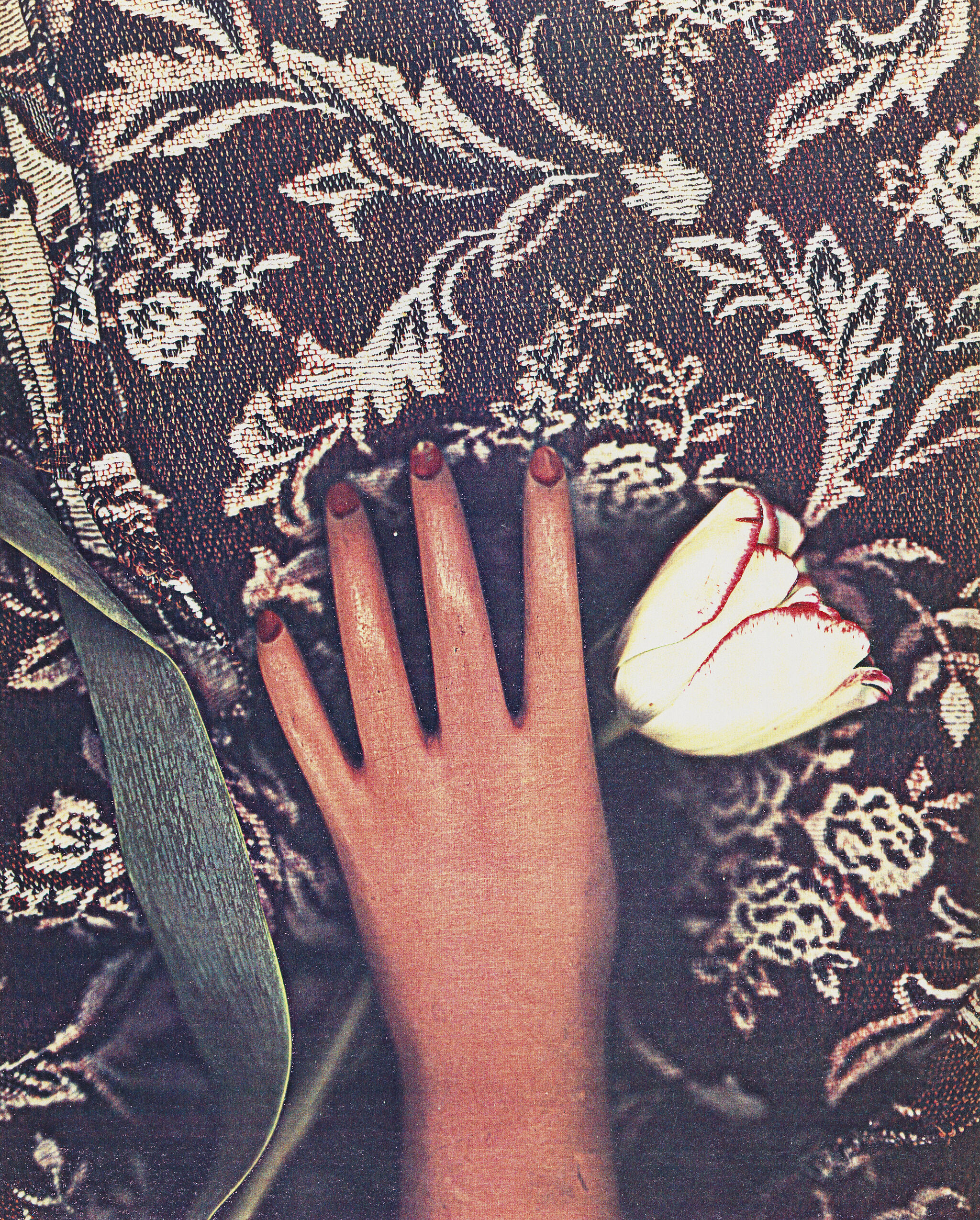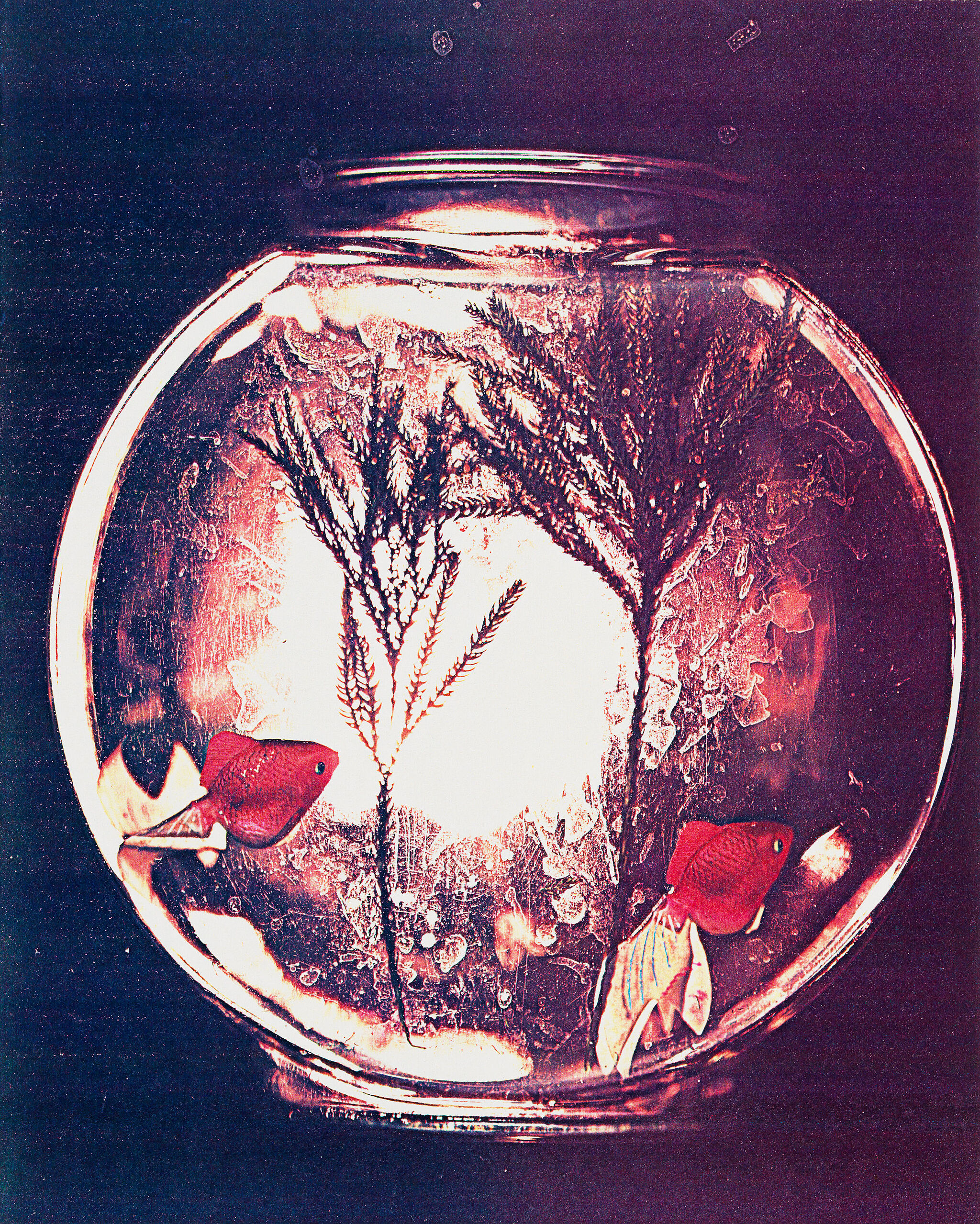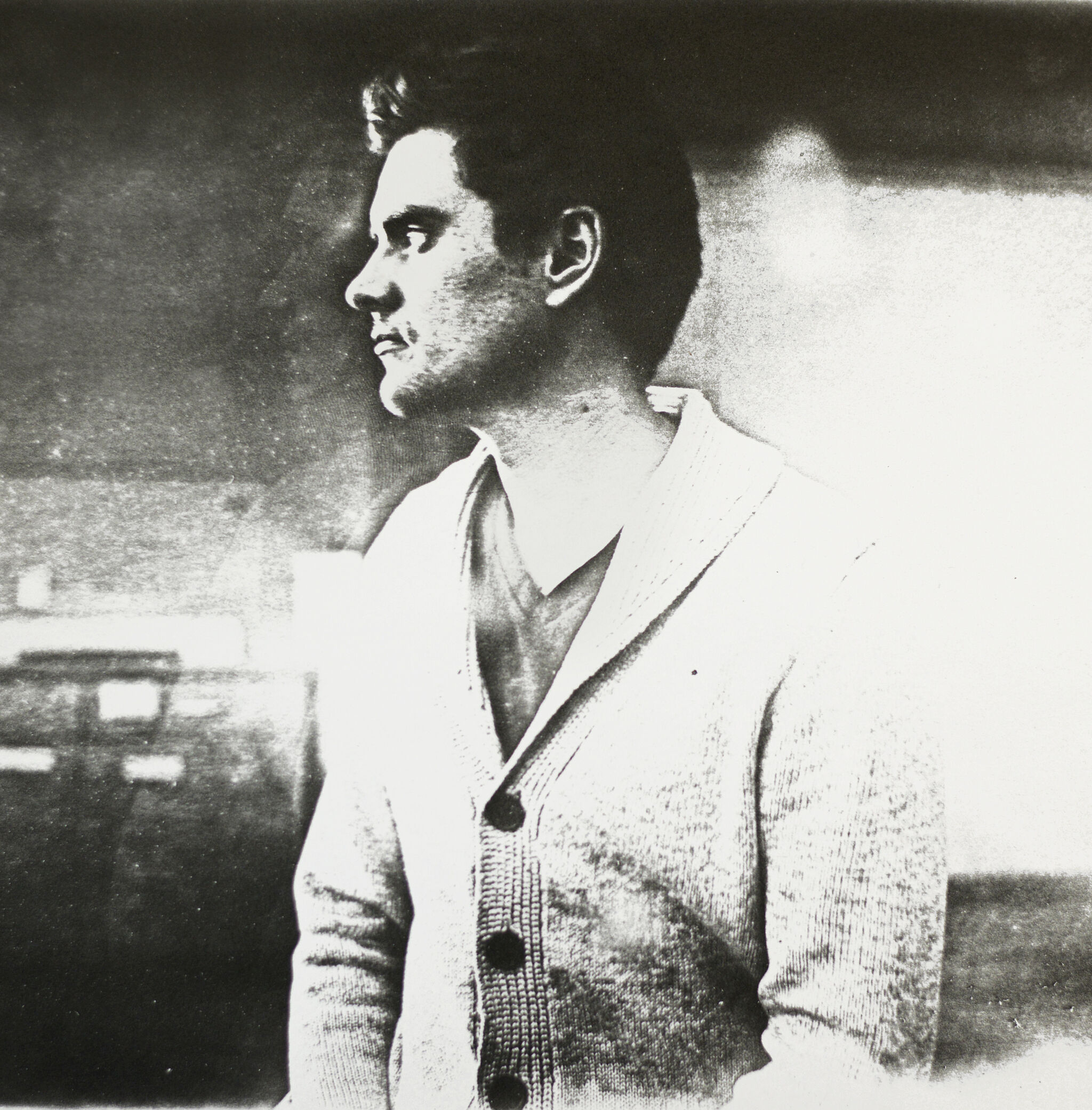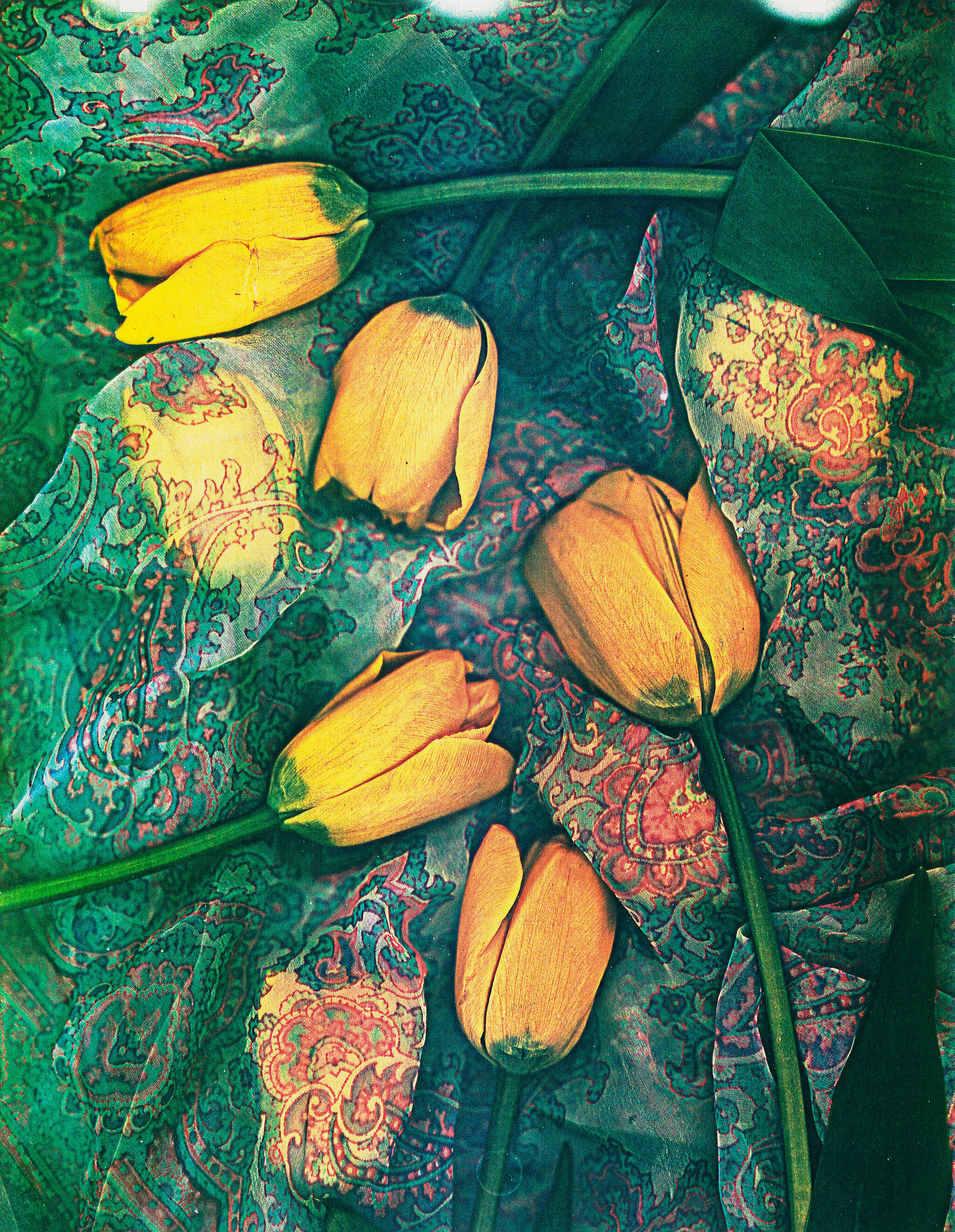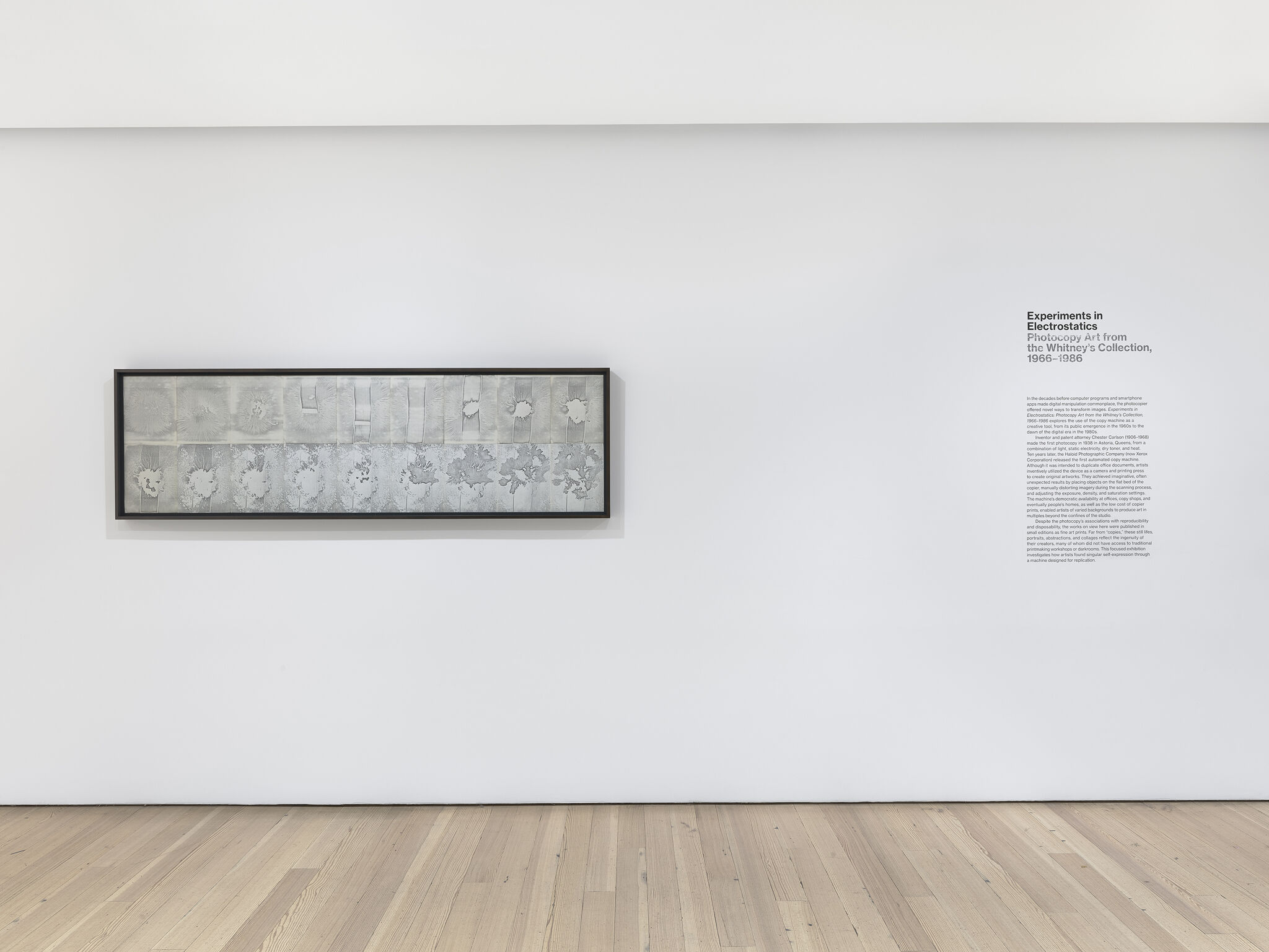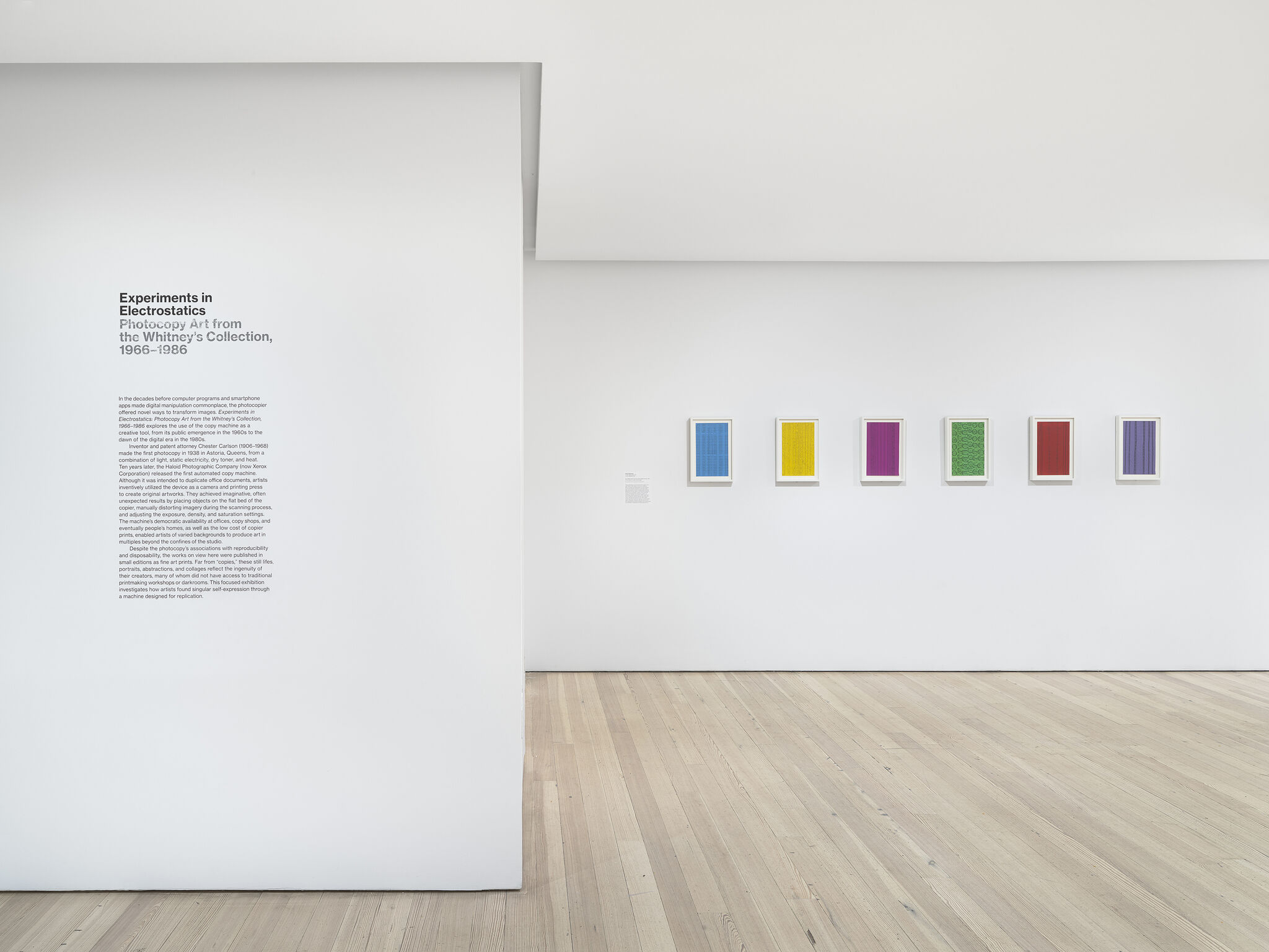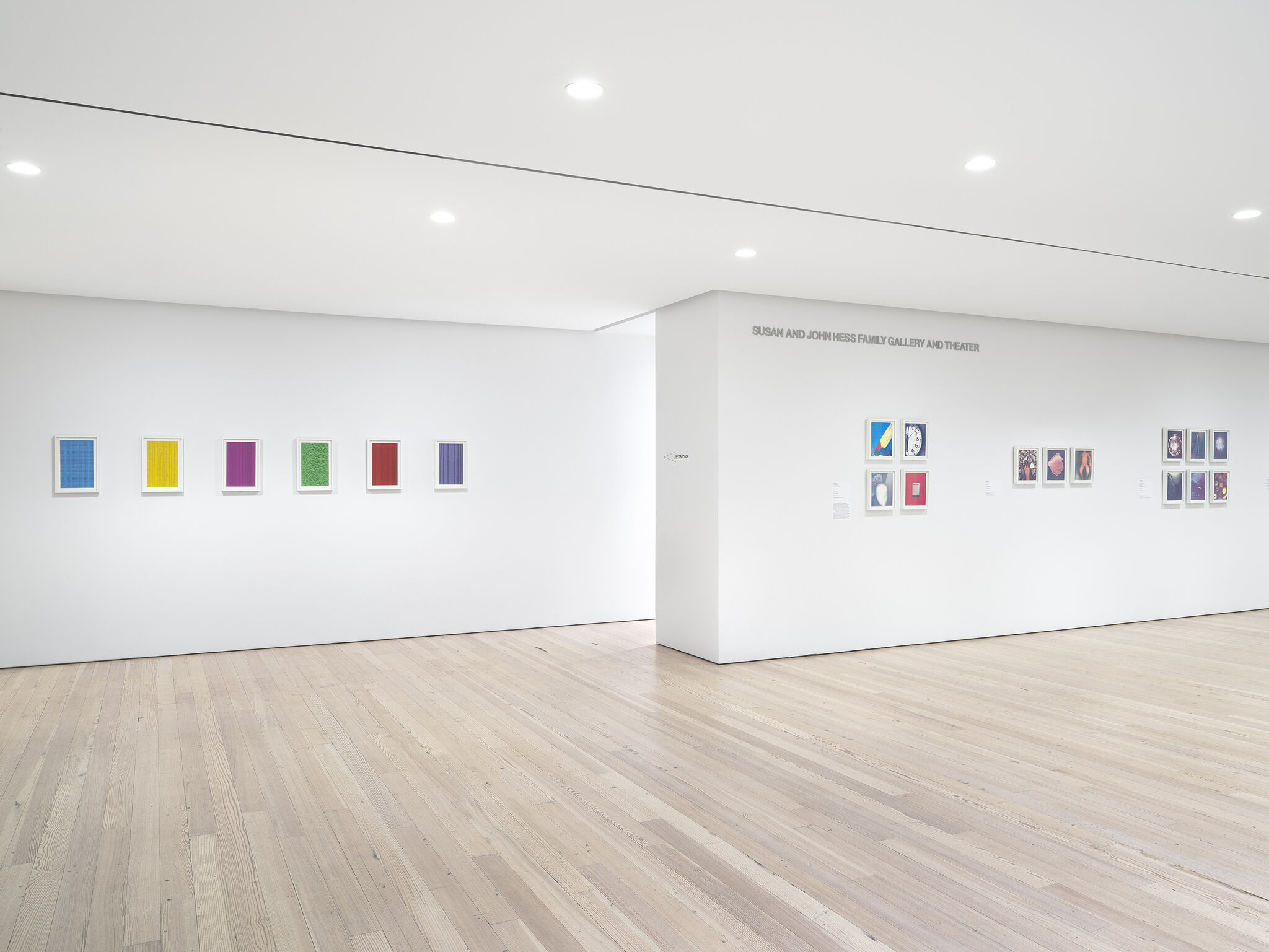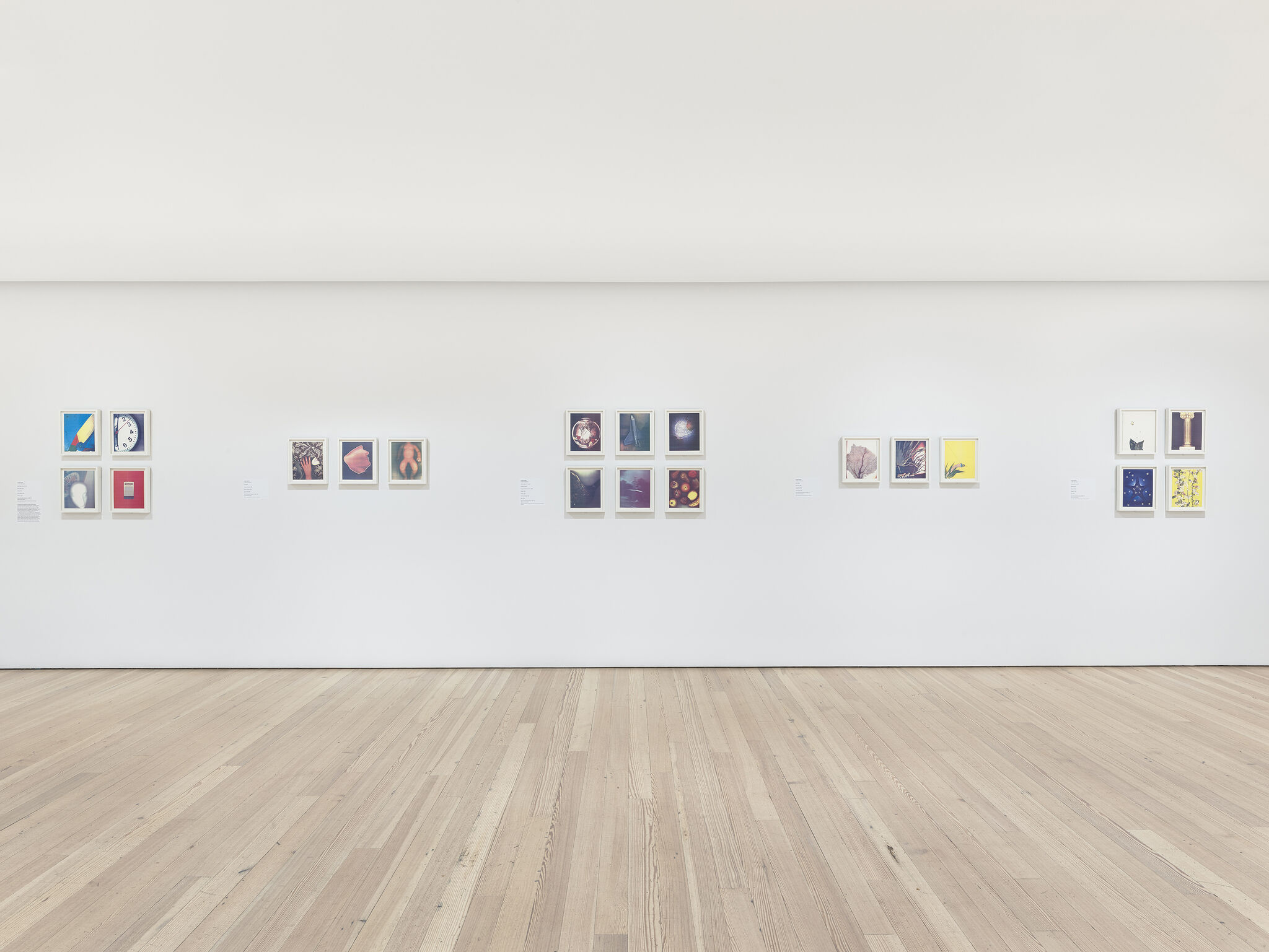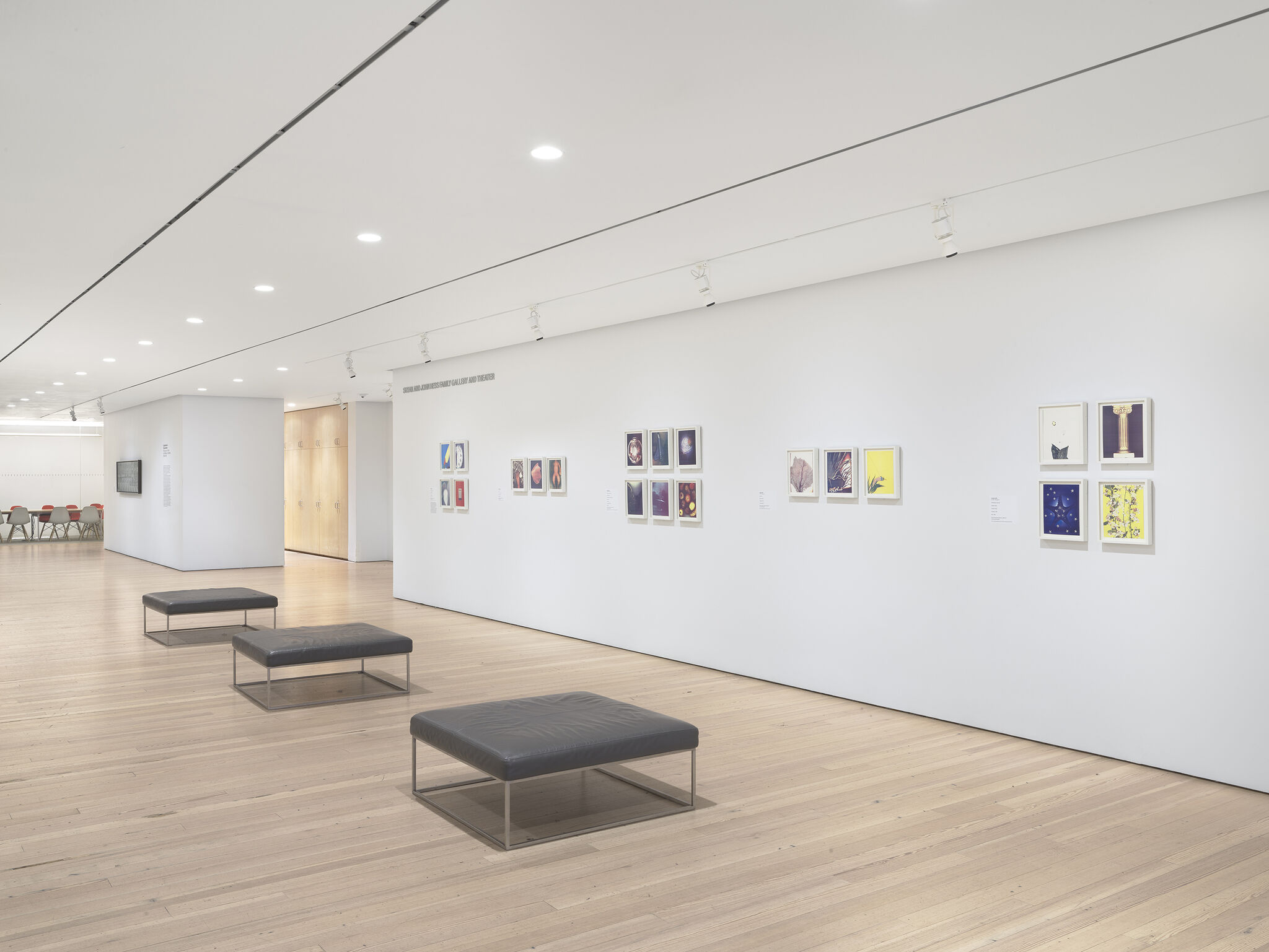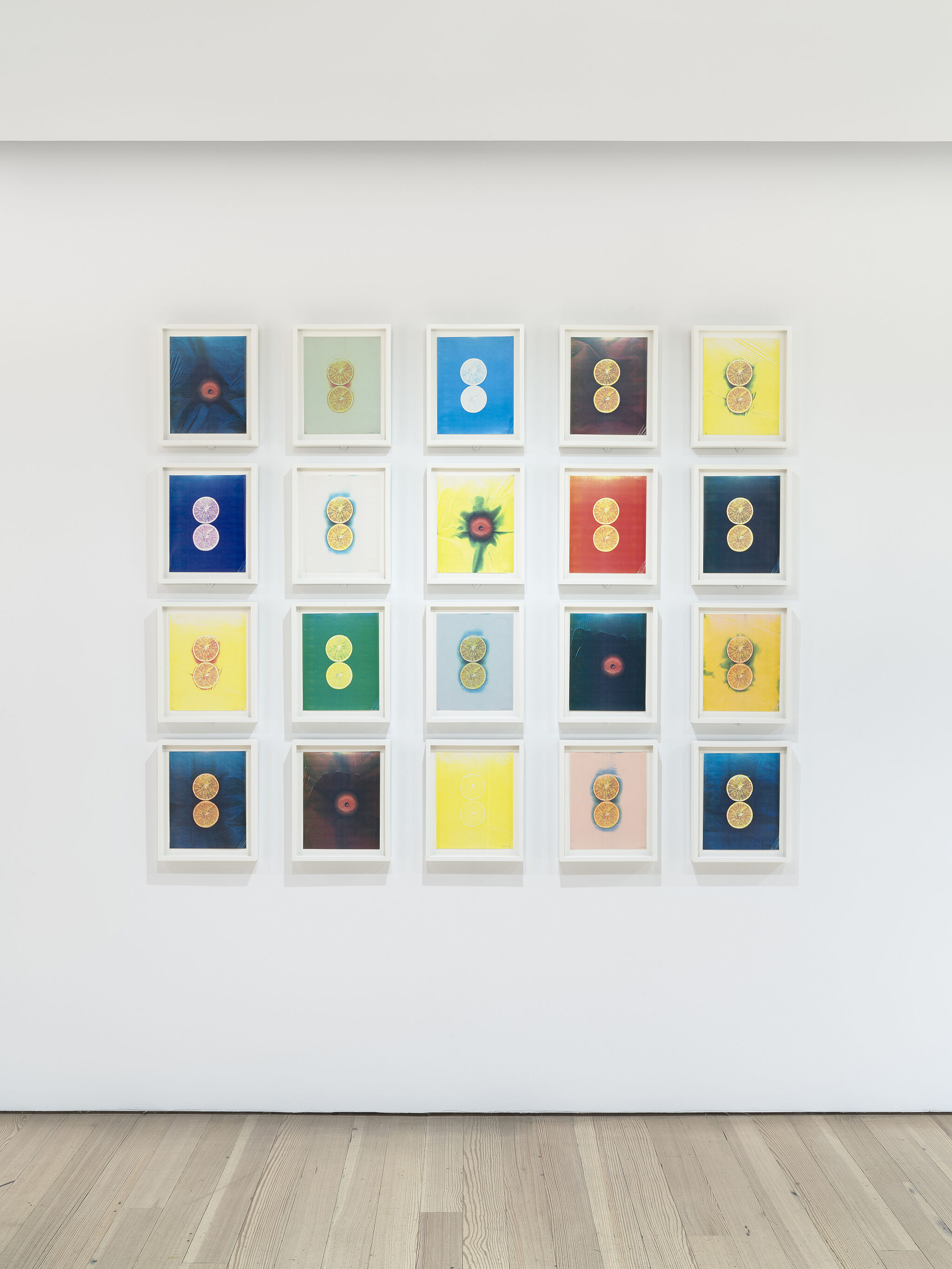Experiments in Electrostatics:
Photocopy Art from the Whitney’s
Collection, 1966–1986
Nov 17, 2017–Mar 25, 2018
Experiments in Electrostatics: Photocopy Art from the Whitney’s Collection, 1966–1986 explores the use of the photocopier as a creative tool, from its public emergence in the 1960s to the dawn of the digital era in the 1980s. Despite the machine’s intended function to reproduce office documents, artists inventively utilized it as a camera and printing press to create original fine art prints. They placed objects on the flatbed, distorted imagery in the process of scanning, and manipulated the exposure, density, and saturation settings to achieve imaginative, often unexpected results. Far from “copies,” these still lifes, portraits, abstractions, and collages reflected the ingenuity of their makers. Focusing on three artists and one collective—Edward Meneeley, Lesley Schiff, Barbara T. Smith, and the International Society of Copier Artists—this exhibition investigates how artists found self-expression through a machine designed for replication.
Experiments in Electrostatics is organized by Michelle Donnelly, curatorial fellow.
Lesley Schiff
3
Frustrated with painting, Lesley Schiff (b. 1951) began experimenting with the photocopier in the late 1970s. She discovered that with the push of a few buttons, she could use the machine “like a paintbrush.” She described the process as “plugged in. Electronic. Direct. Visual. Spontaneous. Immediate. It goes as fast as your brain and the result is instantaneous.”
Schiff printed her series Seasons at a copy shop in New York by first arranging props, such as a mannequin’s hand, a deflated beach ball, and a toy rocket, on the copier’s glass flat bed. She then manipulated light and shadow by placing papers and textiles behind the objects, lifting the lid while the light bar was in motion, and turning on the machine’s slide lamp to create surreal scenes that hover between dream and reality.

